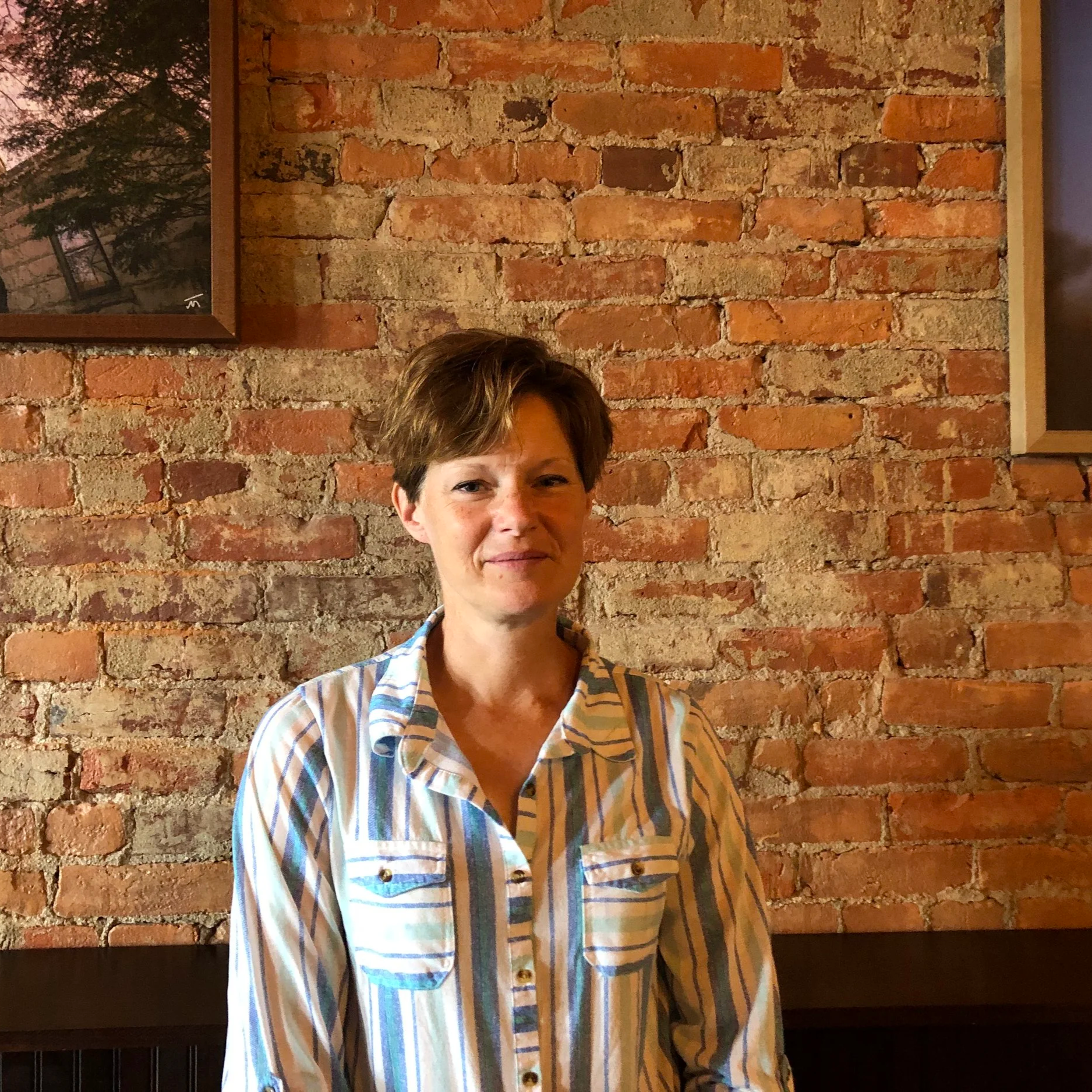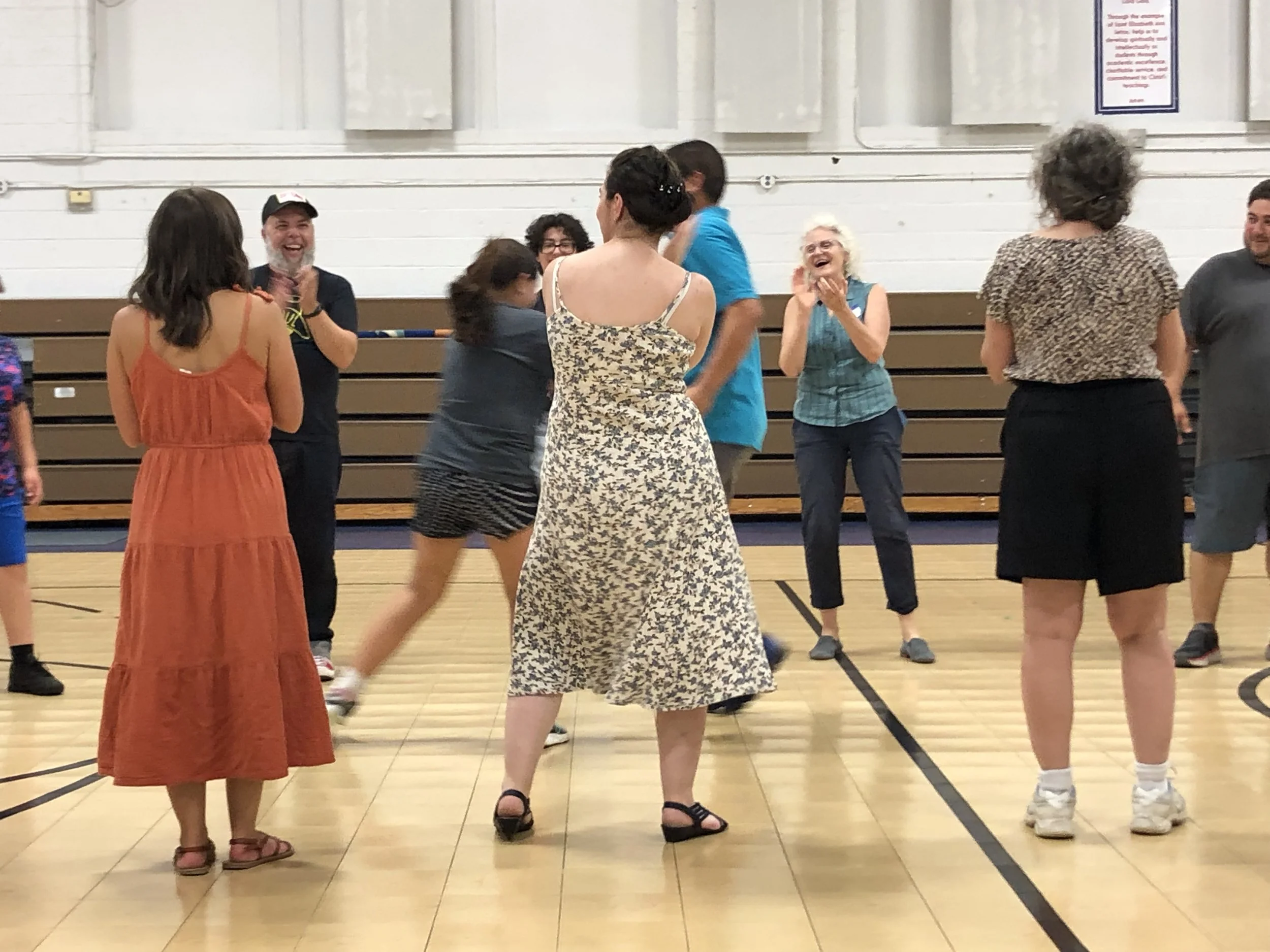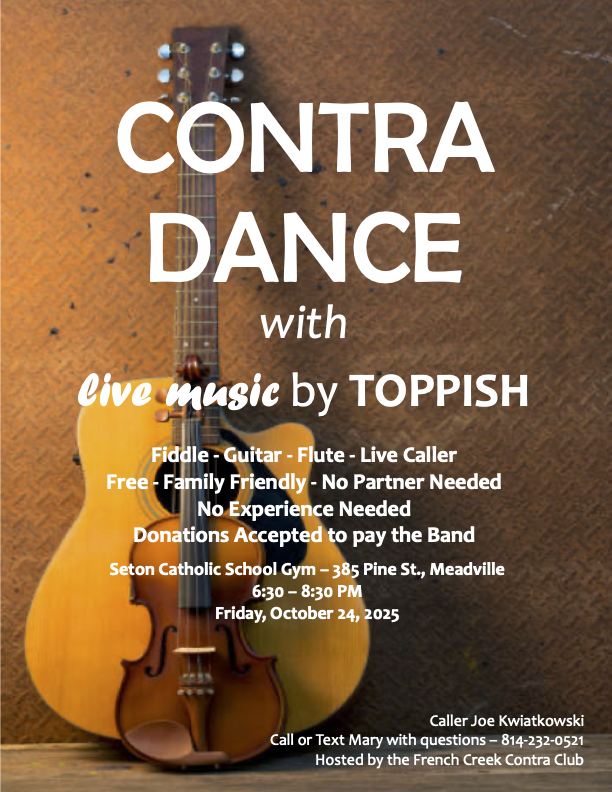Keeping Tradition in Step: How Mary Burkett Builds Community Through Contra Dance
Mary Burkett
Mary Burkett is doing important work of maintaining tradition, bringing generations together, and providing a place for the community to connect through joy. Several times a year she organizes a Contra Dance, a social dance with roots in French and English county dances from the 1700’s. Despite its long history, it is a vibrant American tradition. Contras are held all over the U.S. and Canada. Almost all have live music, typically fiddle driven folk tunes. Before COVID Mary began attending Allegheny College’s weekly contra dances with her large family. She said, “The kids loved it and the band was wonderful.” Post COVID the college did not revive the dances and Mary said her children challenged her to fill the need. "They said, ‘Why do we have to go somewhere else for whatever we're doing? Like, we gotta go to Erie for the art museum. We gotta go to Pittsburgh for other things… why can't we just go into Meadville and do things?’” Seton School was happy to provide their gym, and the band, Toppish, was willing to play music and find a dance caller.
She credits Regency Balls for leading them to discover Contra Dancing. Regency Balls are historic reenactments of English County Dances, inspired by Jane Austen’s novels. Mary says, “My daughters enjoyed them. You can do your hair and research and wear beautiful gowns.” She appreciates how they teach history and are safe spaces to meet other families. “But one of the things I love about Contra dance is that it's not a reproduction of an old thing. We’re keeping alive an evolving American tradition. I love that it's a living thing. It’s been really fun because the music is live and the callers have some dances that are newer and modern.” Mary believes that part of the draw of the contra dance is that it is easy to learn; you don’t need to come with a partner; it is a low stress as the caller leads everyone though the steps; and other dancers enthusiastically welcome beginners.
Contra dances are naturally multigenerational with children through elders all participating. “But the live music just really just keys into some kind of visceral reaction, I think. You know, especially if it's warm and we have the gym doors open, people will come in just to hear the people playing. The fiddle is very evocative for people. But then also, I think that the basic walking rhythm of contra dance is very good for kids.”
Mary credits her Catholic faith as a source of inspiration and guidance. She feels the dances help counter major challenges our society is now facing: escapism, isolation and loneliness. “These dances promote community and real experiences. It's very hard to be on your phone if you're contra dancing.” She sees a tendency for many to gravitate to virtual worlds where everyone has the same views. “But we're creating something that's good and beautiful in the real world. You show up to a dance, as you are, in your jeans and there's a variety of people, some of whom may or may not agree with you if you sat down and talked, but here we all are. We’re not trying to create some sort of ivory pillar over here, you know? It's very important to have your feet on the ground where you are and know that this ordinary world is beautiful.”
We salute Mary in supporting live music, dance, and making a strong community!




